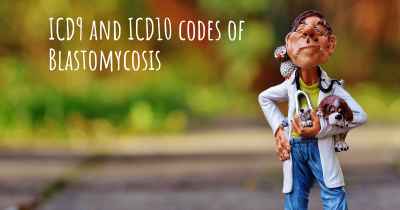What is the history of Blastomycosis?
When was Blastomycosis discovered? What is the story of this discovery? Was it coincidence or not?

Blastomycosis is a fungal infection caused by the organism Blastomyces dermatitidis. It primarily affects the lungs but can also spread to other parts of the body, including the skin, bones, and genitourinary system. The history of blastomycosis dates back to the late 19th century when it was first recognized as a distinct clinical entity.
Discovery and Early Observations:
The first documented case of blastomycosis was reported in 1894 by Dr. Thomas Casper Gilchrist, an American physician. He described a patient with a chronic lung infection characterized by cough, fever, and weight loss. Dr. Gilchrist identified the causative organism and named it Blastomyces dermatitidis.
During the early 20th century, several outbreaks of blastomycosis were reported in different parts of the United States and Canada. These outbreaks were often associated with construction activities, particularly those involving excavation of soil. The workers involved in these projects were at a higher risk of exposure to the fungus.
Advancements in Understanding:
Throughout the 20th century, researchers made significant progress in understanding the epidemiology, clinical manifestations, and treatment of blastomycosis. They discovered that the fungus primarily resides in moist soil enriched with decaying organic matter, such as leaves and wood debris. The spores of Blastomyces dermatitidis can become airborne when the soil is disturbed, leading to human infection through inhalation.
Studies also revealed that blastomycosis is not limited to North America but occurs worldwide, including regions of Africa, Asia, and Europe. However, it remains more prevalent in certain areas of the United States and Canada, known as endemic regions.
Diagnostic and Therapeutic Advances:
Over time, diagnostic techniques for blastomycosis have improved. Initially, the diagnosis relied on identifying the characteristic yeast-like cells of Blastomyces dermatitidis in patient samples, such as sputum or tissue biopsies. However, these methods were time-consuming and often required specialized expertise.
In recent years, molecular techniques, such as polymerase chain reaction (PCR), have been developed to detect the DNA of the fungus more rapidly and accurately. This has greatly facilitated early diagnosis and improved patient outcomes.
Treatment of blastomycosis has also evolved. In the early days, surgical removal of infected lung tissue was the only available option. However, with the advent of antifungal medications, such as amphotericin B and itraconazole, medical management became the primary approach. These drugs have shown efficacy in treating both acute and chronic forms of blastomycosis.
Public Health Measures:
As the understanding of blastomycosis grew, public health measures were implemented to prevent and control the disease. Education campaigns were launched to raise awareness among healthcare professionals and the general public about the risk factors, symptoms, and preventive measures.
Efforts were made to improve occupational safety for workers in high-risk industries, such as construction and excavation. Guidelines were developed to promote the use of personal protective equipment, including masks, to reduce the risk of fungal exposure.
Conclusion:
The history of blastomycosis spans over a century of scientific discoveries and medical advancements. From its initial recognition as a distinct clinical entity to the development of diagnostic techniques and effective antifungal treatments, significant progress has been made in understanding and managing this fungal infection. Ongoing research continues to shed light on the epidemiology, pathogenesis, and potential new therapies for blastomycosis.
· Blastomycosis
· North American Blastomycosis
· Gilchrist’s Disease
· Chicago Disease
History
Blastomycosis was discovered by a French botanist/biologist named Philippe Edouard Léon Van Tieghem in 1876. Blastomycosis is often called Gilchrist’s Disease because it was first described by Thomas Caspar Gilchrist who initially named it b. dermatitidis thinking that it was primarily a dermatological disease. Although further studies showed that the pulmonary system was the first organ system to be affected (1).
Etiological Agents
Blastomyces dermatitidis, the asexual state of Ajellomyces dermatitidis, which is one of the two serotypes (5).
Reservoirs
Moist soil that has decomposing organic debris. You would find these type of soils mostly in south central, south eastern and mid western United states. Microfoci can also be found in Central and South America, and Africa (4).
Transmission
· Blastomycosis is contracted by inhaling aerosolized conidial forms of b. dermatitidis particles found in moist soil, where there is rotting vegetation that has been disturbed (2).
· In rare cases blastomycosis may be transmitted by extrapulmonary manifestations, the skin, which may have lesions that can be contagious (2). Other organs may be affected but skin is the most common besides the lungs.
· Some animals are susceptible to acquiring Blastomycosis also, especially dogs.
General Characteristics
B. dermatitidis is a thermal acting (changing form when the temperature is changed) dimorphic fungus
· When in cooler temperatures (25⁰C) the fungus is a mycelia, mould like form which is infectious.
· When in warmer temperatures (37⁰C) like in the body, the fungus transforms into a yeast once present in the body. The life cycle ends once it is in the body.
- Taxanomic info (6):
· Kingdom: Fungi
· Phylum: Ascomycota
· Class: Euascomycetes
· Order: Onygenales
· Family: Onygenaceae
· Genus: Blastomyces
Tests for Identification
Chest X-ray- In a patient who is positive for blastomycosis you will see alveolar infiltrates, tumor like densities, and nodules in order of frequency (2).
Sputum microscopy
- a small sample of freshly expelled sputum is placed on a microscope slide and 10 % of potassium hydroxide is added. Place a microscope cover slip on top of your specimen and examine it under a microscope. Upon examination you will find yeasts, 8-20 micrometers in size, with single broad based yeast buds. Double refractile walls and multiple nuclei cells will also be present (2).
- Sputum culture- Sabouraud dextrose agar is the media use to isolate and get absolute confirmation for a diagnosis of b. dermatitidis.The down side to this method is the time it takes to see culture growth can be as little as 5 days or sometimes as many as 30 days (2).
Serological tests
- Enzyme Immunoassay (EIA)- is the easiest to perform and the antibodies/antigens are detected early (9).
- Complement fixation and immunodiffusion test- both tests lack sensitivity so they cannot be used to exclude a blastomycosis diagnosis (2)
Posted May 22, 2017 by Mollysmission 2000








